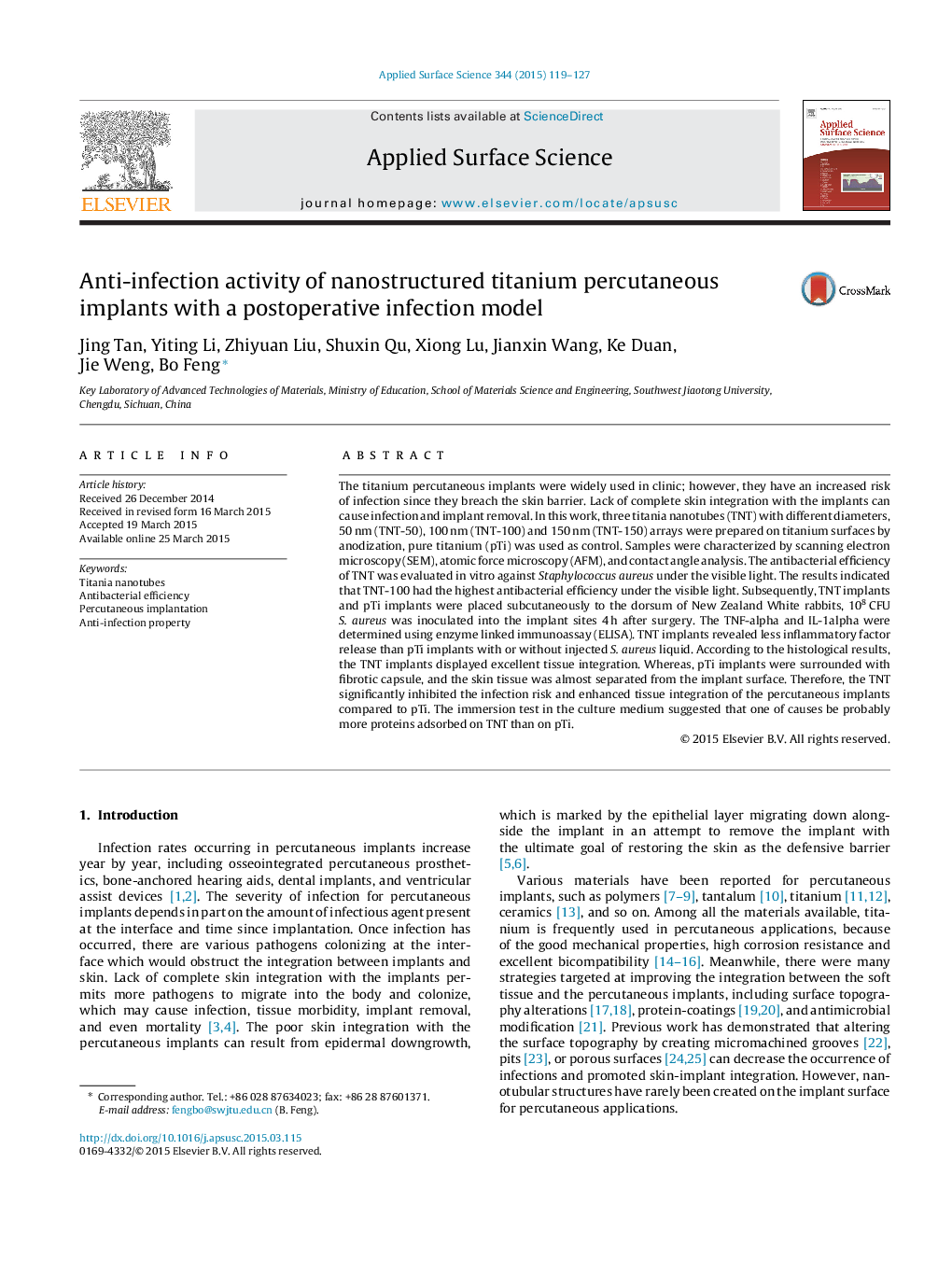| کد مقاله | کد نشریه | سال انتشار | مقاله انگلیسی | نسخه تمام متن |
|---|---|---|---|---|
| 5349463 | 1503620 | 2015 | 9 صفحه PDF | دانلود رایگان |
عنوان انگلیسی مقاله ISI
Anti-infection activity of nanostructured titanium percutaneous implants with a postoperative infection model
ترجمه فارسی عنوان
فعالیت ضد عفونت ایمپلنت های پوستی نانوساختار تیتانیوم با یک مدل عفونت پس از عمل
دانلود مقاله + سفارش ترجمه
دانلود مقاله ISI انگلیسی
رایگان برای ایرانیان
کلمات کلیدی
نانولولههای تیتانیا، بازده آنتی باکتریال، پیوند پوستی، داروی ضد عفونت،
موضوعات مرتبط
مهندسی و علوم پایه
شیمی
شیمی تئوریک و عملی
چکیده انگلیسی
The titanium percutaneous implants were widely used in clinic; however, they have an increased risk of infection since they breach the skin barrier. Lack of complete skin integration with the implants can cause infection and implant removal. In this work, three titania nanotubes (TNT) with different diameters, 50Â nm (TNT-50), 100Â nm (TNT-100) and 150Â nm (TNT-150) arrays were prepared on titanium surfaces by anodization, pure titanium (pTi) was used as control. Samples were characterized by scanning electron microscopy (SEM), atomic force microscopy (AFM), and contact angle analysis. The antibacterial efficiency of TNT was evaluated in vitro against Staphylococcus aureus under the visible light. The results indicated that TNT-100 had the highest antibacterial efficiency under the visible light. Subsequently, TNT implants and pTi implants were placed subcutaneously to the dorsum of New Zealand White rabbits, 108Â CFU S. aureus was inoculated into the implant sites 4Â h after surgery. The TNF-alpha and IL-1alpha were determined using enzyme linked immunoassay (ELISA). TNT implants revealed less inflammatory factor release than pTi implants with or without injected S. aureus liquid. According to the histological results, the TNT implants displayed excellent tissue integration. Whereas, pTi implants were surrounded with fibrotic capsule, and the skin tissue was almost separated from the implant surface. Therefore, the TNT significantly inhibited the infection risk and enhanced tissue integration of the percutaneous implants compared to pTi. The immersion test in the culture medium suggested that one of causes be probably more proteins adsorbed on TNT than on pTi.
ناشر
Database: Elsevier - ScienceDirect (ساینس دایرکت)
Journal: Applied Surface Science - Volume 344, 30 July 2015, Pages 119-127
Journal: Applied Surface Science - Volume 344, 30 July 2015, Pages 119-127
نویسندگان
Jing Tan, Yiting Li, Zhiyuan Liu, Shuxin Qu, Xiong Lu, Jianxin Wang, Ke Duan, Jie Weng, Bo Feng,
